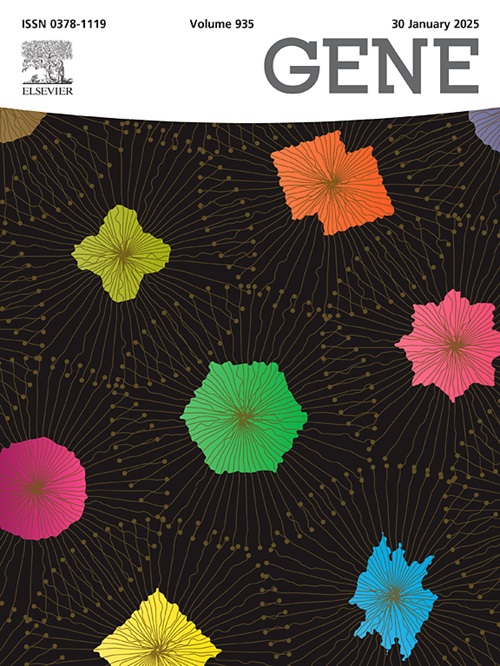Analysis of ferroptosis-related key genes and regulatory networks in diabetic foot ulcers
IF 2.6
3区 生物学
Q2 GENETICS & HEREDITY
引用次数: 0
Abstract
Background
Diabetic foot ulcers (DFUs) is a severe complication of diabetes. Recent evidence suggests that ferroptosis, a form of regulated necrosis, may play a significant role in the progression of DFU. However, the precise molecular mechanisms remain elusive.
Objective
This study aims to identify ferroptosis-related genes (FRGs) and the signaling pathways involved in DFU progression by analyzing the gene expression profiles of DFU.
Methods
Differentially expressed genes (DEGs) were identified by analyzing gene expression data from two DFU-related datasets (GSE38396, and GSE143735). FRGs were collected from both datasets and the literature. DEGs were then intersected with FRGs to identify ferroptosis-related differentially expressed genes (FRDEGs) in DFU. Functional enrichment analysis, protein–protein interaction (PPI) network analysis, receiver operating characteristic (ROC) curve analysis, and regulatory network interaction analysis (including mRNA-miRNA, mRNA-transcription factor (TF), and mRNA-drug interactions) were performed on the FRDEGs. Additionally, immune infiltration analysis was conducted using CIBERSORTx. Finally, skin tissue samples from clinical patients were collected, and the expression levels of FRDEGs in DFU samples were validated through reverse transcription quantitative real-time PCR (RT-qPCR), immunohistochemistry (IHC) and Immunofluorescence (IF), to uncover potential new targets for the diagnosis and treatment of DFU.
Results
A total of 14 DFUs samples (non-healing group) and 12 control samples (healing group) were obtained in this study. We identified 276 DEGs in DFUs samples compared to controls, with 121 up-regulated and 155 down-regulated genes. By intersecting DEGs with ferroptosis-related genes, we identified 10 FRDEGs (AURKA, CTH, FBLN1, FTL, GLS2, KDM5C, MYH9, PCNA, PYCR1, and SPARC). The GO and KEGG analysis results showed that FRDEGs were mainly enriched in biological processes such as amino acid biosynthesis and tight junction pathways. Further analysis of FRDEGs identified ten hub genes closely associated with 112 TFs, 34 miRNAs, and 50 drugs or molecular compounds. Additionally, RT-qPCR validation of skin tissue samples from 8 DFU patients and 8 controls showed that AURKA were significantly up-regulated in DFU, IHC and IF analysis further demonstrated elevated AURKA protein expression in DFU samples. Moreover, AURKA was identified as a potential diagnostic marker for diabetic wound healing, with high diagnostic accuracy based on ROC curve analysis (AUC = 0.950 in the combined dataset, and AUC = 0.881 in the validation dataset). These findings highlight AURKA as a key gene involved in ferroptosis and a potential target for the diagnosis and monitoring of DFUs.
Conclusion
This study identified FRDEGs associated with DFUs, highlighting AURKA as a key diagnostic marker. These findings offer valuable insights into the molecular mechanisms driving DFUs and suggest potential therapeutic targets for their management.
求助全文
约1分钟内获得全文
求助全文
来源期刊

Gene
生物-遗传学
CiteScore
6.10
自引率
2.90%
发文量
718
审稿时长
42 days
期刊介绍:
Gene publishes papers that focus on the regulation, expression, function and evolution of genes in all biological contexts, including all prokaryotic and eukaryotic organisms, as well as viruses.
 求助内容:
求助内容: 应助结果提醒方式:
应助结果提醒方式:


